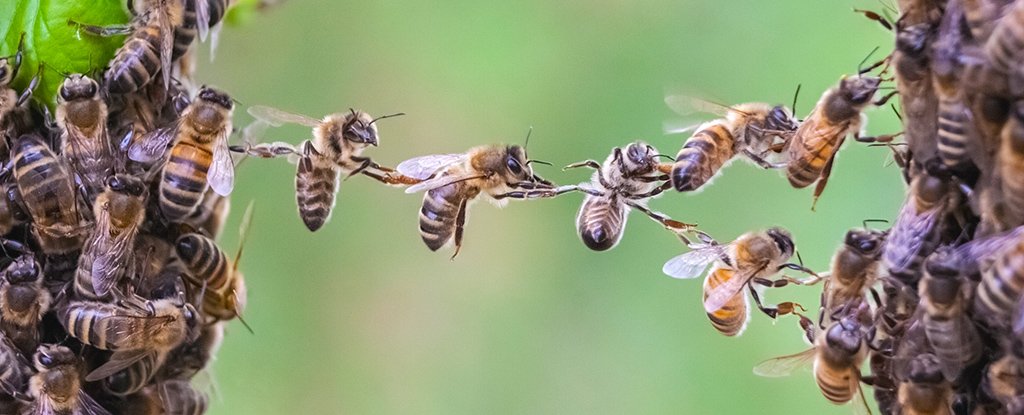古老的病毒可能是使人類擁有意識的原因
來源: An ancient virus could be responsible for human consciousness
原著: Hashem Al-Ghaili (Facebook) | 2018/02/09
譯者: 宗明 (Ming Cheng) | 2018/04/02
原著: Hashem Al-Ghaili (Facebook) | 2018/02/09
譯者: 宗明 (Ming Cheng) | 2018/04/02
一種古老病毒的殘留物正停留在我們的大腦中,這個數百萬年前的病毒可能是人類擁有意識的原因。
新的研究顯示我們的記憶功能來自一種古老的病毒,大約在四億年前這種古老的病毒感染了四足哺乳動物,那些病毒遺傳密碼的小片段今天仍在我們的大腦中活動,原本包含在病毒細胞內的資訊成為我們基因組成的一部分。
科學家們認為,這個病毒在進化過程中被重新利用,幾千年來它演變成 Arc基因(Arc gene) 並且停留在我們的大腦裡,這個基因和我們的神經如何傳遞資訊至關重要,也使我們擁有思考和理性的能力。
Arc基因包裹遺傳資訊,並將其從一個神經元發送到另一個神經元。這種基因的作用方式與病毒相似,一些病毒將它們的遺傳密碼儲存在 RNA中而不是 DNA中, Arc在稱為 RNA的編碼分子中寫下自己的基因指令,然後將其 RNA封裝在類病毒衣殼(virus-like shell) 中,類病毒衣殼在神經元之間傳播時保護內部封裝的資訊,在大腦的不同部分之間傳遞訊息。
科學家們至今仍無法確切地知道它在細胞間傳遞的是什麼資訊,但是研究人員發現若沒有這個 RNA資訊,我們的神經突觸會停止正常運作並死亡。 Arc基因是哺乳動物腦部長期記憶形成的必要條件,這個基因的突變與神經系統失調有關,包括自閉症、精神分裂症、和阿茲海默症。研究中顯示,缺乏 Arc基因的老鼠無法回憶 24小時前發生的事。
病毒通常被稱為基因寄生蟲,他們將遺傳密碼注入宿主細胞,劫持該細胞的組織以產生更多自己的副本,這個過程對宿主細胞要麼無用,要麼有害,每隔一段時間注入的病毒基因就足夠四處傳播,並成為我們基因組的一部分,人類基因組的 40%至80%來自古老的病毒入侵。
神經科學和古代病毒學專家正共同合作以了解人類 Arc基因的確切分子機制,科學家使用病毒將所需的基因傳遞給某些細胞,這允許他們能夠以任何期望的方式對細胞進行基因工程。
- 神經元之間竟能傳遞遺傳訊息! Arc 基因扮演關鍵角色 (Gene Online)
- An Ancient Virus May Be Responsible for Human Consciousness (LiveScience.Com)
- The Neuronal Gene Arc Encodes a Repurposed Retrotransposon Gag Protein that Mediates Intercellular RNA Transfer (Cell Journal)
- A Viral (Arc)hive for Metazoan Memory (Cell Journal)
[ 中英對照 ]
古老的病毒可能是使人類擁有意識的原因
An ancient virus could be responsible for human consciousness
The remains of an ancient virus are resting in our brain.
一種古老病毒的殘留物正停留在我們的大腦中。
This millions-of-years-old virus could be responsible for human consciousness.
這個數百萬年前的病毒可能是使人類擁有意識的原因
New study suggests that our memory comes from an ancient virus.
新的研究顯示我們的記憶來自一種古老的病毒
Which infected a four-limbed mammal around 400 million years age.
大約在四億年前這種古老的病毒感染了四足哺乳動物
Little pieces of that viral genetic code are still alive in our brains today.
那些病毒遺傳密碼的小片段今天仍在我們的大腦中活著
Information contained within the viral cells became part of our genetic makeup.
原本包含在病毒細胞內的資訊成為我們基因組成的一部分
Scientists believe that the virus was repurposed during evolution.
科學家們認為,這個病毒在進化過程中被重新利用
Over the millennia, it evolved into the Arc gene and rested in out brain.
幾千年來,它演變成Arc基因並且停留在大腦中
This gene is believed to be vital to how our nerves transmit information.
這個基因被認為對我們的神經如何傳遞資訊至關重要
And can be responsible for our ability to think and reason.
並且使我們擁有思考和理性的能力
Arc gene packages up genetic information.
Arc基因包裹遺傳資訊
And sends it from one neuron to another.
並將其從一個神經元發送到另一個神經元
This gene functions in a similar way to virus.
這種基因的作用方式與病毒相似
Some viruses store them genetic code in RNA rather than DNA.
一些病毒將它們的遺傳密碼儲存在RNA中而不是DNA中
Arc writes down its own genetic instructions in coding molecules called RNA.
Arc在稱為RNA的編碼分子中寫下自己的基因指令
then it encapsulates its RNA in a virus-like shell.
然後將其RNA封裝在類病毒衣殼(virus-like shell)中
The shells protect the information inside while it travels between neurons.
類病毒衣殼在神經元之間傳播時保護內部封裝的資訊
And ultimately pass messages between different parts of the brain.
最終在大腦的不同部分之間傳遞訊息
Scientists are unsure exactly what information it's passing between our cells today.
科學家們至今仍無法確切地知道它在細胞間傳遞的是什麼資訊
But researchers found that without this RNA information.
但是研究人員發現若沒有這個RNA資訊
Our synapses would stop functioning correctly and die off.
我們的神經突觸會停止正常運作並死亡
Arc gene is essential for long-term memory formation in mammalian brain.
Arc基因是哺乳動物腦部長期記憶形成的必要條件
Mutations in this gene have been linked to neurological disorders.
這個基因的突變與神經系統失調有關
Including autism, schizophrenia and Alzheimer's.
包括自閉症、精神分裂症、和阿茲海默症
In one study, mice lacking Arc gene couldn't recall what happened to them just 24 hours before.
在一項研究中顯示,缺乏Arc基因的小老鼠無法回憶他們在24小時前發生的事
Viruses are often known as genetic parasites.
病毒通常被稱為基因寄生蟲
They inject their genetic code into a host cell.
他們將遺傳密碼注入宿主細胞
An hijack the cell's machinery to produce more copies of themselves.
劫持該細胞的組織以產生更多自己的副本
This process is either useless or harmful to the host.
這個過程對宿主細胞要麼無用,要麼有害
However, every once in a while the injected viral genes are useful enough to hang around.
然而,每隔一段時間注入的病毒基因就足夠四處傳播
And become part of our genome.
並成為我們基因組的一部分
40 to 80% of the human genome comes from ancient viral invasions.
人類基因組的40%至80%來自古老的病毒入侵
Experts in neuroscience and ancient viruses are working together.
神經科學和古代病毒學專家正在共同合作
To understand the exact molecular mechanism of Arc gene in humans.
了解人類Arc基因的確切分子機制
Scientists use viruses to deliver desired genes into certain cells.
科學家使用病毒將所需的基因傳遞給某些細胞
This allows them to genetically engineer cells in any desirable way.
這允許他們能夠以任何期望的方式對細胞進行基因工程
